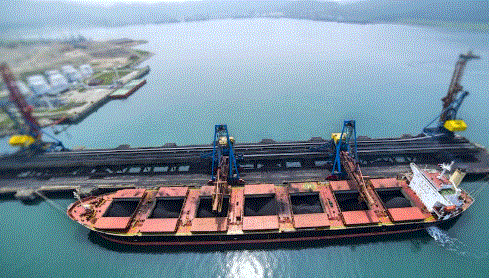Capesize freight rates continued the downward slide despite some improvement in the paper market.
The Capesize 5 time charter average then fell by $1,281 day-on-day to $17,121 on Tuesday, but managed to send some positive signals to shipowners due to the improving paper market.
However, the physical market remained weak and dragged down the Baltic Dry Index (BDI) by 4.19% or 59 points day-on-day to 1,350 readings.
Improving paper market in an overall weak physical market
There was some fresh shipping demand in the physical market, but not enough to push up the freight rates, despite some improvement seen in the paper market.
As such, the Pacific market had a longer cargo list with the return of more trade participants, as Rio Tinto was heard to fix a vessel for mid-October laycan at around $7/wmt for the west Australia to China route.
However, the shipping outlook remained bearish for the Atlantic market due to the oversupply of vessels from the high ballaster list especially for the first half of November in Brazil loading window.
Brazilian miners like Vale and CSN, were heard to fix several vessels for November laycan at the indicative freight levels at the $15.50/wmt to $16/wmt range for the Brazil to China route.
VLSFO prices fall on softening demand
VLSFO prices dropped by $3.50/mt day-on-day to $340/mt at the port of Singapore, amid slowing oil demand caused by the pandemic.
However, there was upward movement in the crude oil prices, spurred by market talk of reaching a second US stimulus deal by mid-week.
In the meantime, the bunker demand continued to surge for Chinese port of Zhoushan, which reached 3.259 million mt of bonded marine fuel over the Jan-Sep period, up 17.7% year-on-year.
Chinese VLSFO production had grown in line with higher demand due to changes in tax system that made Chinese bunker ports more competitive in the region.
